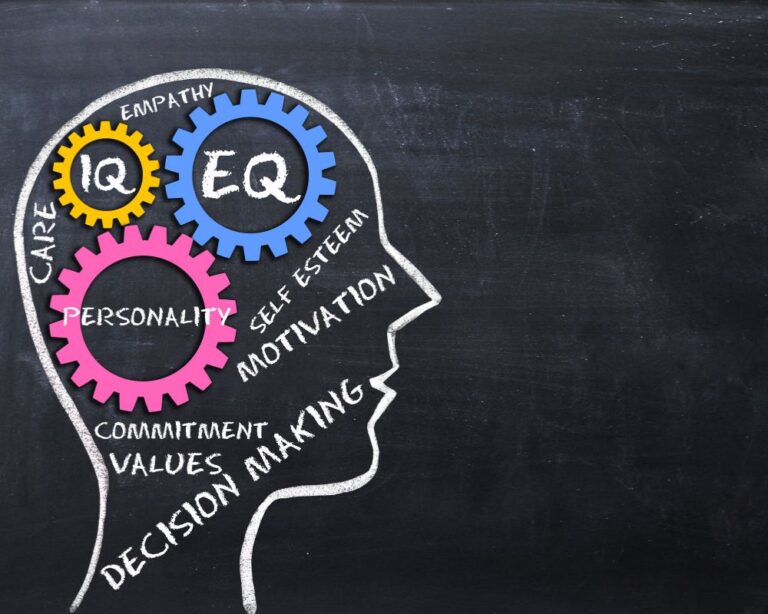Setting boundaries can feel especially challenging for people with ADHD, who often struggle with impulsivity, rejection sensitivity, and time blindness. Without clear limits, daily life can quickly become overwhelming, leaving them drained and frustrated. This guide investigates practical ways to recognize personal needs, communicate them effectively, and maintain healthy limits in relationships, work, and self-care.
Small, consistent steps can make a big difference knowing where to begin is often the hardest part.
ADHD and Boundary Challenges
Because ADHD affects how people regulate their thoughts, emotions, and actions, setting boundaries can feel like an uphill battle. Individuals with ADHD often struggle with impulsivity, making it harder to acknowledge or stick to personal boundaries in conversations or relationships.
Emotional dysregulation can lead to oversharing or difficulty saying no, while time management challenges may cause them to overcommit. Distractibility and hyperfocus can also make it tough to notice when boundaries are crossed—either by others or themselves. Poor boundary-setting can leave them feeling drained, overwhelmed, or resentful over time.
Identifying these challenges is the first step toward creating healthier limits. By comprehending how ADHD impacts self-awareness and social interactions, they can begin tailoring strategies that respect their needs. Small, intentional steps in self-care can pave the way for stronger personal boundaries.
The Importance of Self-Care in ADHD Management
Self-care is a foundation for managing ADHD, but many struggle to recognize its basics or identify what they truly need. People with ADHD often face barriers like guilt or time constraints, making self-care feel unattainable.
Breaking these challenges into smaller steps can help build sustainable habits without feeling inundated.
Understanding Self-Care Basics
Managing ADHD effectively starts with acknowledging that self-care isn’t a luxury—it’s a foundation for stability. Self-care involves intentional steps to nurture physical, emotional, and mental health, helping individuals build resilience and maintain balance. Incorporating practical strategies into a self-care routine can substantially improve personal well-being and emotional regulation, making daily challenges easier to navigate.
| Self-Care Action | Impact on ADHD |
|---|---|
| Short daily walks | Boosts focus and reduces restlessness |
| Scheduled quiet time | Augments emotional regulation |
| Consistent sleep routine | Improves executive functioning |
Simple, consistent practices can make a difference without requiring excessive time or resources. Self-care is not indulgent—it’s essential for preventing burnout and fostering long-term stability. Small changes add up, especially when tailored to individual needs. Transitioning to the next point, identifying personal needs certifies these practices align with unique challenges.
Identifying Personal Needs
Identifying what works—and what doesn’t—is the initial step in crafting a self-care plan that fits the unique challenges of ADHD. Acknowledging personal values helps individuals prioritize activities that align with their well-being, while healthy boundaries prevent overwhelm. Time management strategies, like breaking tasks into smaller steps, reduce stress. Practical tips, such as scheduling rest or using reminders, create structure.
- Reflect on energy levels—Observe when fatigue hits and plan breaks accordingly.
- Align activities with values—Choose self-care that feels meaningful, not obligatory.
- Set clear limits—Decline overcommitment to protect mental health.
- Use tools for consistency—Timers or apps can reinforce routines without rigidity.
Understanding these needs fosters a tailored approach, balancing productivity and self-compassion.
Overcoming Common Barriers
Many people with ADHD struggle to make self-care a priority, even though it’s one of the most powerful tools for managing symptoms. Difficulty setting boundaries often creates barriers to self-care, as guilt, financial stress, or overwhelming responsibilities take over.
Perfectionism and technological distractions can also derail efforts, making it hard to stick to routines. However, setting boundaries can lead to better symptom control by carving out time for rest, movement, or hobbies. Reframing self-care as necessary—not selfish—helps overcome resistance. Small, affordable steps, like short walks or scheduled breaks, build consistency.
Professional support or flexible strategies ease mental health hurdles. Acknowledging these challenges with compassion, rather than frustration, makes progress possible. Self-care isn’t indulgence—it’s sustainability for ADHD brains.
Identifying Your Personal Boundaries
Comprehending personal boundaries commences with perceiving what feels suitable or unsuitable in routine communications. For individuals with ADHD, boundary setting begins with self-reflection to distinguish personal needs and limits.
Self-care relies on acknowledging these boundaries to prevent overwhelm. Key areas to explore include emotional responses, time management, and physical space.
- Emotional Limits: Observe when interactions drain energy or trigger discomfort.
- Time Allocation: Identify tasks or people that demand excessive time.
- Physical Space: Discern preferences for personal distance or shared environments.
- Communication Styles: Determine how direct or indirect exchanges should be.
Communicating Boundaries Clearly and Effectively
While setting personal boundaries is essential, expressing them clearly can feel challenging, especially for those with ADHD, who could struggle with impulsivity or fear of rejection. Communicating boundaries requires directness and care, ensuring others understand limits without causing confusion.
ADHD adults could avoid boundary conversations due to discomfort, but acknowledging their own needs as valid makes self-care possible. Reframing boundary-setting as an act of mutual respect—not confrontation—can ease anxiety. Tools like boundary flashcards help practice phrasing beforehand, reducing spontaneous reactions.
Leaning on supportive friends to reinforce limits also builds consistency. Clear communication prevents misunderstandings, fostering healthier relationships while protecting emotional energy. The key is balancing firmness with kindness, making boundaries feel like shared agreements rather than strict rules.
Strategies for Saying No Without Guilt
- Reframe “No” as Self-Care: Remind yourself that declining requests preserves mental health, not rudeness.
- Use Simple, Direct Language: Phrases like “I can’t commit to this” avoid over-explaining while staying polite.
- Prioritize Personal Limits: Identify non-negotiable needs (rest, work) and let them guide responses.
- Practice Assertiveness: Role-play saying no to build confidence in real-life moments.
Those with ADHD often struggle with guilt, but acknowledging the right to set limits is empowering. Small steps—like pausing before answering—help avoid impulsive yeses. Over time, these habits strengthen boundaries without sacrificing kindness.
Managing Technology and Digital Boundaries
Technology can be a double-edged sword for people with ADHD—helpful for staying connected but often overwhelming as boundaries blur. Without clear limits, screen time can overstimulate and distract, making it harder to focus or enjoy offline activities.
Setting boundaries with technology is key—tracking usage, disabling notifications, and using website blockers reduces compulsive scrolling. Designating tech-free zones or times creates space for quality time with others or solo self-care. Reading, journaling, or nature walks offer calming breaks from digital noise.
Loved ones or professionals can provide accountability, helping reinforce healthier habits. Small, consistent steps—like scheduling device-free meals—build sustainable routines that balance connectivity with mental clarity. Prioritizing real-world moments over endless scrolling protects mental health without sacrificing convenience.
Setting Work and Professional Boundaries
Workplaces often expect constant availability, but for those with ADHD, blurred professional boundaries can lead to exhaustion and frustration. Managing ADHD in a work environment requires clear limits to protect emotional health and sustain productivity.
Here’s how to set effective boundaries around work:
- Define work hours—Stick to a schedule and avoid overextending, even when others push for more.
- Communicate needs—Request accommodations like flexible hours or written instructions to reduce overwhelm.
- Say no with confidence—Politely decline extra tasks that disrupt focus or self-care routines.
- Prioritize breaks—Short, regular pauses prevent burnout and improve task performance.
Navigating Relationships and Social Boundaries
Acknowledging healthy relationships can feel tricky for people with ADHD, especially as social boundaries get fuzzy. ADHD often makes it harder to detect social cues, leading to oversharing, interrupting, or unintentionally crossing personal space. These challenges in social interactions can frustrate both the person and those around them.
Without clear communication, boundaries can lead to misunderstandings or strained connections. Identifying Boundaries with ADHD requires self-awareness and practice—learning to pause before speaking or asking others about their comfort levels helps. Small steps, like setting time limits for conversations or practicing active listening, make a difference.
Support from trusted friends or professionals can also guide healthier interactions. Identifying these struggles is the initial step toward building stronger, more respectful relationships.
Overcoming Common Obstacles in Boundary Setting
Setting boundaries can feel like an uphill battle for those with ADHD, especially as impulsivity and rejection sensitivity get in the way. These challenges often stem from difficulty managing emotions, reading social cues, or staying mindful of others’ needs. However, with self-awareness and practical strategies, these obstacles can be navigated.
- Impulsivity can lead to blurting out responses or agreeing to things too quickly. Pausing before responding helps solidify control.
- Rejection sensitivity makes enforcing boundaries scary. Reminding oneself that boundaries protect mental health can alleviate the fear.
- Poor time management disrupts boundaries around schedules. Setting reminders or buffers creates structure.
- Hyperfocus causes missed social cues. Checking in periodically with others maintains mutual respect.
Tools and Techniques for Maintaining Boundaries
Several practical tools can make boundary-setting easier for people with ADHD, even as impulsivity or emotional sensitivity feels overwhelming. Boundary flashcards offer a simple way to practice verbalizing limits, helping individuals rehearse responses when boundaries are crossed.
Supportive friends or family can reinforce these efforts, providing gentle reminders to stay consistent. Self-awareness is key—recognizing emotional triggers allows for clearer, more effective strategies in setting limits. Coping techniques, like pausing before reacting, help manage impulsivity, while reframing boundaries as opportunities for growth reduces fear of rejection.
Small acts of self-care, such as taking breaks during stressful interactions, strengthen resilience. Through combining these approaches, individuals with ADHD can build healthier relationships while protecting their overall well-being.
Seeking Support and Professional Guidance
Working with ADHD coaches or therapists can help individuals develop personalized strategies for setting and maintaining boundaries.
Support groups offer a space to connect with others facing similar challenges, providing shared experiences and accountability.
Professional resources, like cognitive-behavioral therapy, also address emotional barriers that make boundary-setting difficult.
Therapy and Coaching Options
Individuals with ADHD often find boundary-setting challenging, but professional support can make a significant difference. ADHD makes it harder to navigate social situations and manage emotions, which is why Seeking Support through therapy or coaching can be transformative.
- ADHD Mentoring: Specialized coaches provide practical techniques for setting boundaries, tailored to individual needs.
- Cognitive Behavioral Therapy (CBT): Helps identify and change thought patterns that interfere with healthy limits.
- Therapy for Emotional Roots: Explores past experiences that may make boundary-setting feel overwhelming.
- Structured Programs: Organizations like the ADD Resource Center offer ethical, ADHD-specific guidance.
These options empower individuals to build skills while tackling the unique challenges ADHD presents. Professional guidance guarantees progress without feeling isolated in the process.
Support Groups Benefits
Many people with ADHD discover that support groups offer more than just advice—they provide a space where struggles feel comprehended. These social settings allow individuals with ADHD to connect with others who share similar challenges, reducing feelings of isolation.
Hearing real-life stories can lead to new coping strategies and a sense of validation. Support groups often normalize difficulties, helping one recognize they’re not alone in their experiences. Some groups focus on boundary-setting, offering practical tips tailored to ADHD brains. Others provide emotional encouragement, reinforcing progress.
For those hesitant to join, online communities can be a low-pressure starting point. Whether in-person or virtual, these gatherings foster accountability and mutual growth. The shared apprehension within these spaces often inspires confidence, making it easier to implement healthy boundaries in daily life.
Conclusion
Conclusion:
Setting boundaries with ADHD isn’t about building walls—it’s about creating space to thrive. With self-awareness and practice, anyone can learn to protect their energy and nurture healthier relationships. But what if the initial step was simply acknowledging your own worth? Small, consistent efforts add up, turning boundary-setting from a struggle into a strength. Support is out there, and advancement is always within reach.





